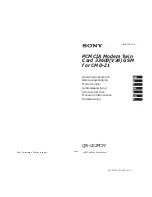
T
ROUBLESHOOTING AND
H
ELP
R
ESOURCES
6-22
• The server you’re dialing in to must support and provide a digital V.90 signal. Your ISP can provide you with a list of dial-up
connections and information on what those connections currently support.
• The telephone line between your ISP and your modem must be capable of supporting a 56K connection and contain only one
analog-to-digital conversion. The 56K signal from your ISP begins as a digital signal. Somewhere between the ISP and your
modem, there will be a analog-to-digital signal conversion so that your modem can receive the data. There must be no more than
one analog-to-digital signal conversion in the path from your ISP to your modem. If more than one analog-to-digital conversion
occurs, your connect speeds will default to V.34 (33.6). There may also be impairments on the local lines between your ISP and
your modem. These impairments can prevent or limit V.90 connection speeds. All telephone calls are routed differently, so you
should try making your 56K connection several times. One way to test this is to dial into a long distance location. Long distance
lines are often much clearer than local lines. It is important to note that telephone companies are constantly upgrading their
systems. Lines that do not support 56K today may support 56K in the near future.
• Your modem must be connecting to a V.90/56K server. A pair of 56K modems will not connect to each other at V.90/56K
speeds.
Содержание 3CP5613
Страница 2: ......
















































